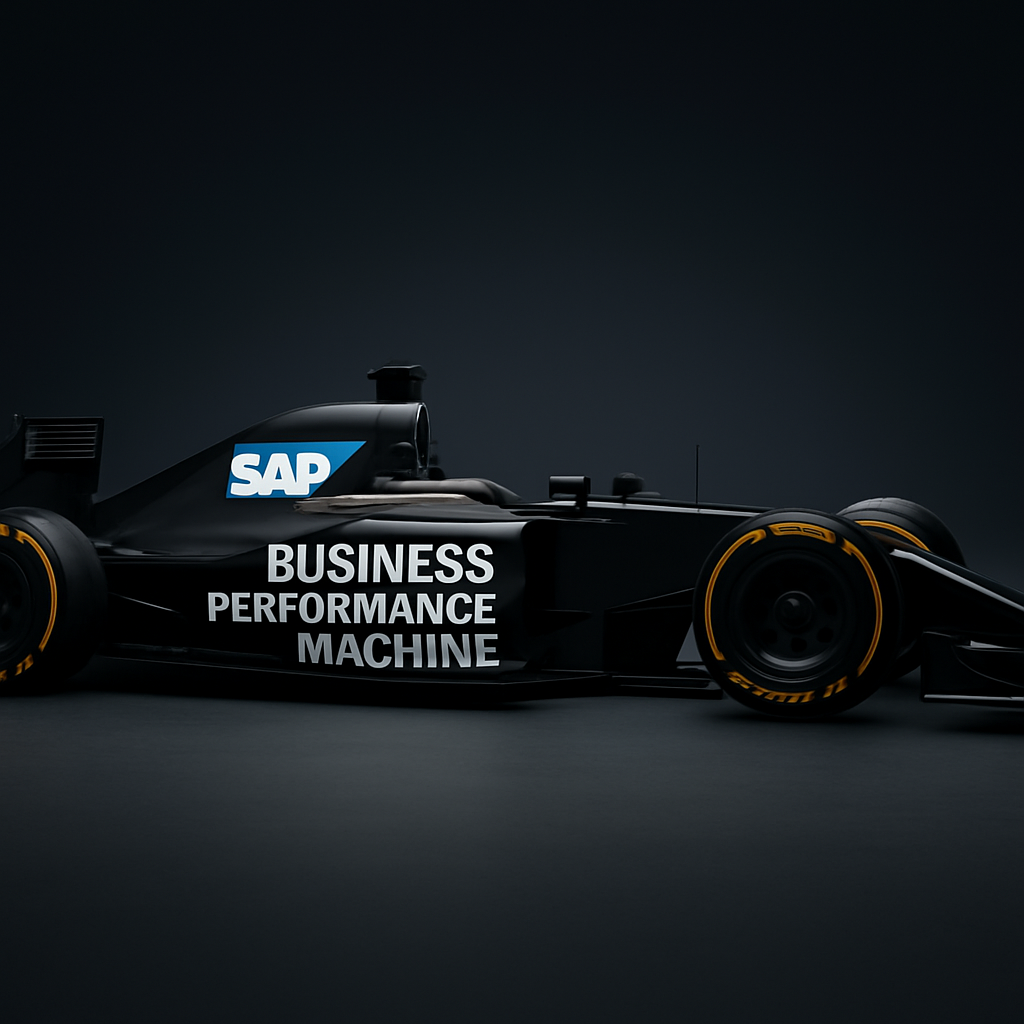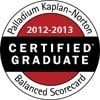If your SAP system isn't actively making your business better, you are leaving money on the table. It is really that simple.

Many leaders see SAP as a cost center, a complex IT system they have to maintain. This viewpoint completely misses the true value and potential for real SAP driven business performance improvement.

You likely paid a lot for your SAP systems. But are you getting the most out of it? Most companies operate at only 30-50% of its potential. This happens because SAP's power is in its deep integration and data insights. Realizing the full value of SAP business performance improvement means looking beyond just basic operations and into strategic optimization.
Need Strategic Level Advice on getting maximum value from your SAP System. Then get our CEO's Guide to SAP
The True Purpose of SAP: Performance, Not Just Processes
Let's get one thing straight. SAP wasn't built just to automate your old processes. Anyone can digitize a paper form. SAP's core design is about something much bigger.

The system's actual purpose is to improve business performance. Every module and every line of code exists to make your company run better, faster, and smarter. This is a fundamental shift in thinking for many executives. A focus on improving performance helps a business reach its goals for organizational success.
The SAP business technology platform (SAP BTP) enables seamless integration between different parts of your business, from finance to logistics. This connection breaks down silos and provides a unified view of your operations. This perspective is where you find opportunities to make impactful changes and find some much-needed Cost Optimization Insights, pushing your company toward peak performance.

Pro-Tip: Clearly map your core processes and align them with SAP modules to reveal where integration can provide the fastest business impact.
Why Most SAP Systems Underperform
So, if the system is so powerful, why isn't it working wonders for everyone? There are a few common and costly reasons. It almost always comes down to the initial implementation of the SAP ERP and a lack of ongoing focus on continuous performance.
During a big SAP project, budgets often get squeezed. To save money, project scope gets reduced. The must-haves get built, but the features that drive real value are pushed to a later phase. A phase that rarely comes.
This leads to an under-implemented system that doesn't account for the evolving business landscape. It does the basics but misses key features for performance optimization. You're left with a powerful engine that's stuck in first gear. It technically works, but it's not performing how it could.

The Phantom Phases of Your Rollout
Does a "Phase 2" or "Phase 3" rollout sound familiar? These planned expansions are often where the advanced sap analytics and optimization features live. Yet, they frequently get postponed or canceled altogether.
Business priorities shift, and new projects come up. The budget for finishing the existing SAP business rollout disappears. As a result, the system remains incomplete. It never reaches its full potential to improve business outcomes.
You are left paying full price for a system you are only partially using. This is a major source of unrealized ROI. Your team also gets stuck with workarounds and manual processes outside of SAP, which leads to another big problem related to human errors.
The Hidden Cost of Data Leakage
Data leakage is a huge issue that costs companies millions. It happens when critical business activities are not captured inside your existing SAP system. Think about it for a second.
Imagine your sales team creates a price quote in an external spreadsheet. If that deal is lost, does that information make it into SAP? Probably not. You just lost valuable insights about pricing, competitors, and why you lost the sale.

This is process data leakage. It's happening in your system right now. Every time an employee uses a separate tool for data entry or skips a step, a little bit of data leaks out. This can be especially damaging in areas like warehouse management, where inventory accuracy is paramount.
Over time, these small leaks become a flood of missed opportunities and bad information. Your business is then forced to make decisions based on incomplete data. This hurts your ability to form a Profit-Driven Business Strategy.
Pro-Tip: Regularly audit your teams for off-system processes—small leaks add up and erode your data-driven advantage
Tools to Map and Measure Business Performance
Okay, so how do you fix this? The good news is that SAP provides tools to help you identify and plug these gaps. You just need to know they exist and how to use them.
These tools are your map. They show you what your system can do. They also show you how that connects to what your business needs to do. This is the first step toward achieving streamlined operations and conducting regular performance assessments.
Using them helps you move from being reactive to proactive, allowing you to monitor performance effectively. You can start planning for performance enhancements instead of just putting out fires. This is where your business technology strategy meets practical application.
Mapping Your Path with Solution Composer
One powerful tool is the Industry Solution Composer, which replaced the old Solution Map Composer. Think of this as a catalog of all SAP capabilities. But it's organized by business process and industry, including specific sectors like life sciences.
You can use it to see which SAP functions support your specific performance goals. Are you trying to improve supply chain efficiency? The composer shows you the exact tools and processes within SAP created to help.
It helps you visualize the gap between what you have and what you could have. According to research on business process management, a clear process map is critical for improvement. This tool gives you exactly that for your SAP environment.

Pro-Tip: Use the Industry Solution Composer quarterly to discover underused capabilities in your current SAP environment.
Your Blueprint: Solution Manager's Business Process Repository
Another key tool is the Business Process Repository inside SAP Solution Manager. If the composer is the map, the repository is your detailed review of current operations. It documents exactly how your business processes are configured in the system today.
This is incredibly valuable for performance management. It gives you a single source of truth for how work gets done. You can analyze your current process performance and spot inefficiencies or areas of data leakage.
It is also essential for managing change and implementing SAP updates. When you want to improve a process, the repository shows you the starting point. It helps make sure that any changes you make are structured, tested, and documented correctly for long-term customer success.

Turning Data into Dollars: Your Guide to SAP Business Performance Improvement
Having the right tools is one thing. But you also need the right approach to connect those tools to financial results. This is about making a clear case for investment and measuring the returns.
This involves services and methods used to find the hidden value in your SAP system. It's about building a business case for change. You need to show how a technical project will lead to a better bottom line and enhance productivity.
Let's explore two key concepts SAP and its partners use to help you achieve this. They are Value Engineering and Business Transformation Services. They sound corporate, but their goals are very practical: helping you make informed decisions.
Finding the ROI with Value Engineering
Value Engineering (I happen to be a SAP Certified Value Engineer) is a systematic approach to identifying and quantifying the potential benefits of an SAP project. It's all about the ROI. Consultants help you build a solid financial justification for making performance improvements.
The process starts by looking at your strategic objectives and helping you set clear goals. It then identifies key performance indicators (KPIs) that matter to you. From there, they connect proposed SAP changes directly to those KPIs, offering real-time performance checks.
This gives you a clear picture of the expected value. For example, a project to improve inventory management might be tied to reducing holding costs by 15%. You can even use an ROI Calculator to model different scenarios before committing resources to app development or other initiatives.
A detailed review helps quantify these key benefits. A simple comparison can illustrate the impact of these performance management systems.
| Process Area | Before Optimization (Manual Workarounds) | After Optimization (Streamlined in SAP) |
|---|---|---|
| Quote Generation | Sales reps use external spreadsheets; lost deal data is not captured. | Quotes are created in SAP; all data is tracked for analysis. |
| Inventory Counts | Manual cycle counts with high risk of human errors and data entry mistakes. | Automated counts using mobile devices, offering real-time inventory updates. |
| Performance Reporting | Data pulled from multiple systems into Excel; reports are days old. | Real-time insights via SAP Analytics Cloud dashboards. |

Pro-Tip: Before any new SAP initiative, build a business case using value engineering—estimate your specific ROI with KPIs up front.
The SAP Analytics Cloud SAP solution provides powerful visualization tools. Using the analytics cloud, you can build dashboards that provide stakeholders with immediate access to critical business metrics. This technology, built on the SAP Business Technology Platform, can even use machine learning to predict trends and prevent performance issues.
Aligning People and Processes
Technology alone is never the answer. Business Transformation Services focuses on the people and process side of the equation. This helps make sure that a digital transformation actually sticks.
These professional services help you manage the organizational change that comes with improving processes. This includes training, communication, and redefining job roles. These solutions offer a path to enhancing user satisfaction and employee engagement.
A successful project aligns technology, processes, and people toward a common goal. This holistic view is what separates projects that deliver real improvement from those that just install new software. It takes expert help, often from top SAP Consulting Services, to get this alignment right and increase productivity.
A reputable SAP partner provides valuable technology support and implementation services. They understand that a great user experience is central to adoption. With proper goal setting, you can also improve employee performance and achieve your desired business outcomes.

Pro-Tip: Don’t just focus on technology. Invest equally in training and change management to maximize SAP performance improvements.
Lessons CEOs Can Apply Today
You do not have to wait for a massive project to start seeing more value. You can take action now to shift your organization's mindset. Here are a few lessons you can apply today.
- Treat your SAP system as a strategic asset, not just an IT cost.
- Demand to see how technology initiatives will improve specific business metrics.
- Challenge your team to find and eliminate sources of data leakage.
- Invest in fully completing your planned SAP rollouts and enhancements.
- Use SAP's own tools, like Solution Manager and the Analytics Cloud, to analyze and document processes.
- Make continuous performance improvement a part of your company culture.
- Hold your IT team and business leaders jointly accountable for SAP's value.
- Ask your teams what manual workarounds they use outside of the system.
- Start small with a pilot project to prove the value of optimization.
- Set clear performance goals and question the status quo to find better ways to use the tools you own.
Conclusion
Your SAP system is one of the most powerful tools your company owns. But its power is only unlocked when you treat it as a driver of business value. Shifting from a simple process automation mindset to a performance-focused one is essential for success in the modern business landscape.
You have to actively manage your system, plug data leaks, and use the right tools to find hidden opportunities. A commitment to continuous SAP business performance improvement is what will set you apart from competitors. Managed services can provide ongoing support, ensuring your system delivers a real return on your significant investment.
Get a SAP Value Realization Roadmap.
We are a SAP implementation and support partner. We can implement SAP in your business from 'greenfield' all the way to performing global roll-outs. With our deep Industry Expertise, we can help you uncover hidden value within your SAP system and drive your business to levels of profitability.
Please use our book a meeting service to get started.




